The design basis for a typical spiral conveyor system often overlooks two of the most important factors, namely the harborage sites and surface areas. While equations like available throughput and required dwell time are critical for profitability, the efficiency of the spiral design should include calculating the operational parameters that affect the cleaning process and could compromise the safety of the system.
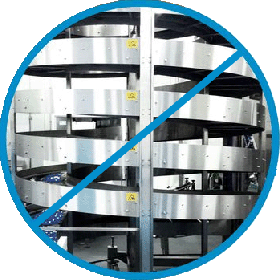 Harborage sites and growth areas present a major risk to consumer safety in food processing facilities. The FDA is taking a fresh approach to food safety, aiming to improve traceability, respond to outbreaks quickly, and adopt new business models that enhance food safety culture and introduce new preventative protocols at production facilities. Modern spiral conveyor systems require a hygienic design that reduces cleaning costs and eliminates the risk of harborage sites, which lead to growth points that could contaminate food products.
Harborage sites and growth areas present a major risk to consumer safety in food processing facilities. The FDA is taking a fresh approach to food safety, aiming to improve traceability, respond to outbreaks quickly, and adopt new business models that enhance food safety culture and introduce new preventative protocols at production facilities. Modern spiral conveyor systems require a hygienic design that reduces cleaning costs and eliminates the risk of harborage sites, which lead to growth points that could contaminate food products.
Designed for Cleanability: A Truly Hygienic Spiral Conveyor System
Under the umbrella of smarter food safety, any hygienic design starts at the plant floor level. Hard-to-clean facilities use equipment that has:
- Drum-driven friction systems
- Enclosed frames and bracket supports
- Snap-on wear strips with pocket areas
- Concealed surfaces and cylinders
- Cage bar caps that include non-cleanable areas
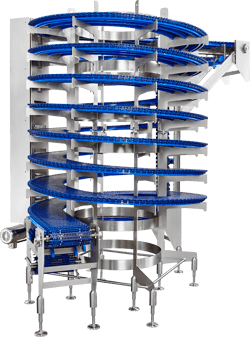
Because these design features create multiple harborage sites, cleaning out the contaminants and niches will become unsustainable over time while eating away at your profits. Receiving a positive environmental pathogen test requires an investigation into the root cause. This involves shutting down and disassembling parts of the equipment, collecting samples from the possible niches, thoroughly cleaning all the equipment, and then reassembling the spiral conveyor system.
According to Eurofins’ Food Assurance team, poor sanitary design is often the biggest cause of growth points. Exacerbating the problem is the fact that multiple harborage sites may be the cause of the contamination, each requiring investigations that could shut down operations for up to six weeks.
To mitigate these risks, food processors have to look for a sanitary conveyor design that is truly hygienic.

A Sanitary Spiral Design that Saves Time and Resources
A SideDrive Conveyor Co. spiral conveyor is the world’s most hygienic solution available. Our design basis aims to eliminate harborage sites while reducing the surface area of the entire system. Fewer harborage sites and a smaller surface area enable you to clean the system faster while reducing the potential for growth sites that cause positive environmental pathogen tests.
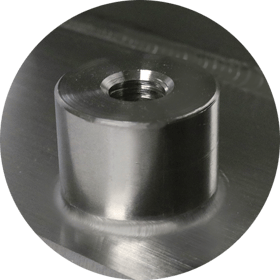
Our spiral conveyors reduce harborage sites and minimize surface areas by using:
- A drum-less design with an open stainless steel cantilever frame
- Sloped surfaces and rounded edges with continuous welds
- Welded standoffs with minimal horizontal contact points
Along with these features, the edge-driven belt uses USDA-compliant Nylatron drive sprockets and stainless steel brackets designed for cleanability. USDA-approved food-safe hygienic wear strips and all plastic belting make it easy to execute high-pressure wash-down protocols without shortening the usable life of the system.
By making the cleaning process the focus of our design basis, food processors can maintain sanitary operations while saving time and resources during every shift.
Hygienic and Flexible Spiral Conveyors for Sustainable Operations
Our entire system’s design focuses on helping you maintain a sustainable, safe, and economically viable food processing operation without compromising on sanitation. These edge-driven, hygienic spiral solutions come in endless configurations that integrate seamlessly with the rest of your facility’s infrastructure.
With a modular and flexible design, our food-safe conveyor solutions outperform every other type of spiral available on the market. From the time it takes to clean the system, to the use of resources like labor, water, and chemicals, we can prove that our spiral conveyors increase your profitability while reducing product liability concerns.
If you want to know how you can save time and money with our spiral conveyor designs, let’s talk.

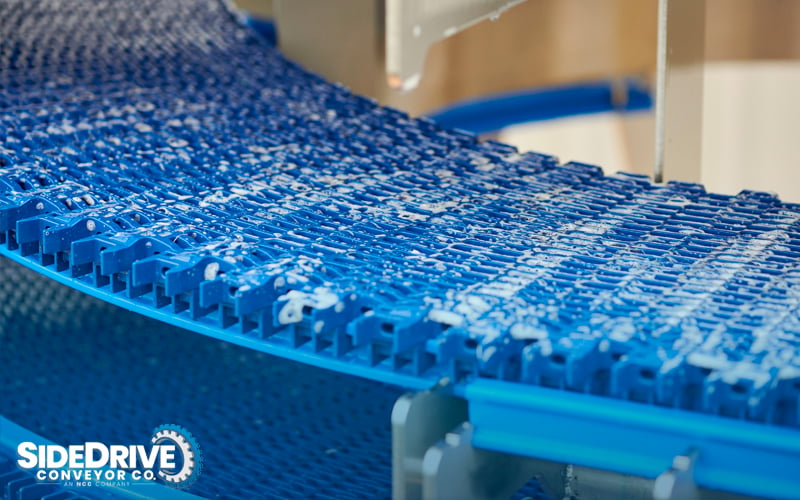
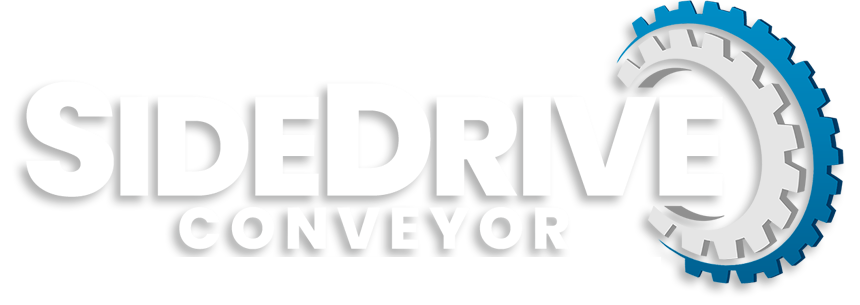

 Harborage sites and growth areas present a major risk to consumer safety in food processing facilities. The FDA is taking a
Harborage sites and growth areas present a major risk to consumer safety in food processing facilities. The FDA is taking a


